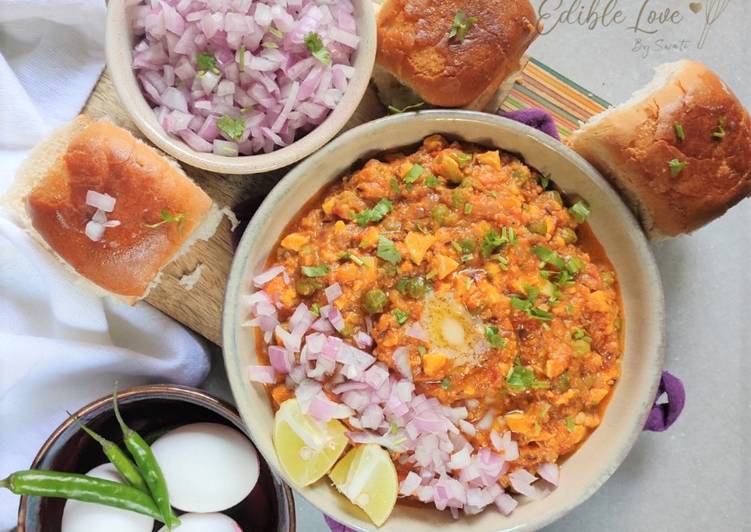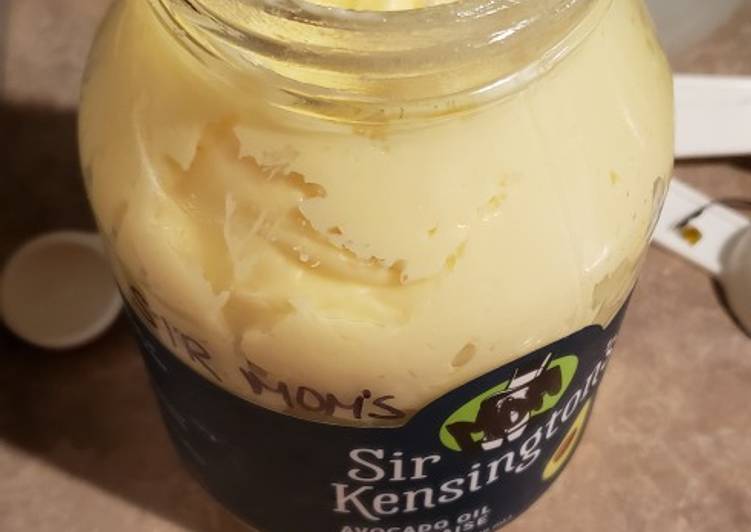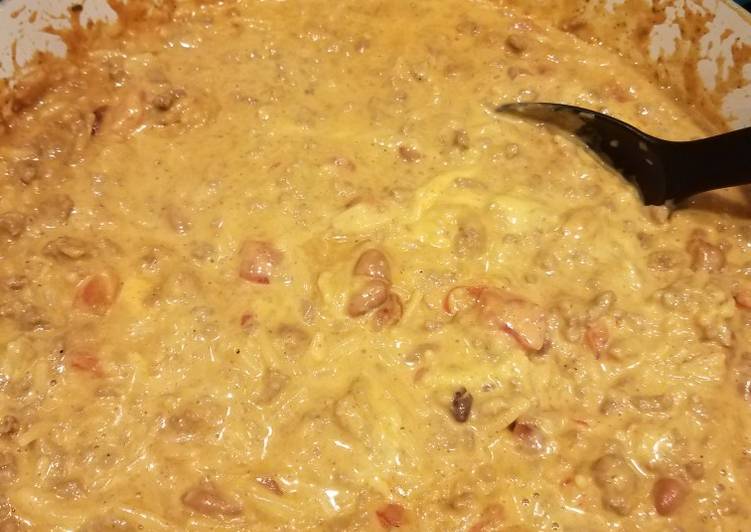
Hey everyone, it’s Drew, welcome to our recipe page. Today, I will show you a way to make a distinctive dish, boiled egg pav bhaji. It is one of my favorites food recipes. This time, I’m gonna make it a little bit tasty. This will be really delicious.
Egg pav bhaji is an Indian street food dish that originated in Maharashtra. Pav or bread is toasted in butter and served with mashed vegetables seasoned with pav bhaji masala and a generous amount of butter. This recipe is a variation of normal pav bhaji with the addition of boiled eggs instead of.
Boiled egg Pav bhaji is one of the most favored of current trending meals on earth. It is enjoyed by millions every day. It’s simple, it’s quick, it tastes yummy. They’re fine and they look wonderful. Boiled egg Pav bhaji is something that I have loved my whole life.
To begin with this recipe, we must prepare a few ingredients. You can have boiled egg pav bhaji using 25 ingredients and 5 steps. Here is how you cook that.
The ingredients needed to make Boiled egg Pav bhaji:
- Prepare For bhaji
- Make ready For Boiling together-
- Get 1 small potato diced in big pieces
- Take 1/4 cup green peas
- Prepare 1/2 carrot diced roughly
- Take 8-10 florets of cauliflower
- Get 2 eggs boiled, peeled and mashed
- Get 1 tbsp oil
- Take 1 tsp jeera
- Take 1 pinch hing
- Take 1 large onion, finely chopped
- Take 2 small tomatoes, finely chopped
- Take 1-2 green chilies, finely chopped
- Prepare 1 tbsp pav bhaji masala
- Prepare 1 tsp dhaniya powder
- Prepare 1 tsp salt (or to taste)
- Make ready 2 tbsp ketchup (optional)
- Get 1 tbsp butter or more as per taste
- Get 3 tbsp chopped green coriander
- Make ready For Pav buns
- Get 4 pav buns
- Get 2 tbsp butter to pan fry
- Make ready Other Ingredients
- Make ready 1 onion chopped
- Make ready 1 lemon cut in wedges
Pav Bhaji is popular Indian street food where dinner rolls/buns are served with spicy mashed veggies topped with dollop of butter. Delicious and healthy egg pav recipe which is so yummy and is quick to make as well. This makes a great breakfast or lunch option. Similar Recipes, Masala Pav Tawa Paneer Masala Pav Bhaji Masala Powder Soft Fuffy Pav Whole wheat pav Mumbai Pav Bhaji.
Steps to make Boiled egg Pav bhaji:
- For the bhaji- In a pressure cooker add the potatoes, carrot, peas and cauliflower. Add ½ glass of water and cook for 3 whistles. Mash the vegetables. Boil the eggs, peel and mash them.
- In a kadai, add 1 tbsp of oil add jeera and hing, when jeera turns golden add the onions and sauté till light golden. Now add the tomatoes and green chilies, cook till the masala releases the oil.
- Add the pav bhaji masala, dhaniya powder and salt. Add the ketchup; Mix well. It is now time to add the mashed vegetables and eggs. Mix nicely. If you feel it is too thick add some water to get a semi gravy consistency. Add the chopped green coriander.
- For the Pav- Cut the pavs horizontally in two, heat some butter on a tawa and put the pavs on the tawa cut side down. Roast till golden brown. Flip and roast again.
- To serve- Serve the pav bhaji in a platter top with butter, sprinkle some chopped onions and lemon juice. Serve hot with crispy roasted buns.
Boiled eggs sautéed with onion, tomato, ginger and garlic, served hot garnished with fresh coriander leaves. For more recipes related to Egg Bhaji checkout Kolhapuri Egg Curry, Omelette Curry, Egg Macho, Kodi Guddu Pulusu. Egg bonda recipe also known as egg pakora or egg bajji is a street food and is served as a snack. Recipe with step by step pictures. Add besan, ajwain (vaamu), salt, red chilli powder, masala powder, rice flour (or corn flour) and turmeric.
So that is going to wrap it up for this special food boiled egg pav bhaji recipe. Thank you very much for your time. I’m sure that you can make this at home. There’s gonna be interesting food at home recipes coming up. Don’t forget to bookmark this page in your browser, and share it to your family, colleague and friends. Thank you for reading. Go on get cooking!


